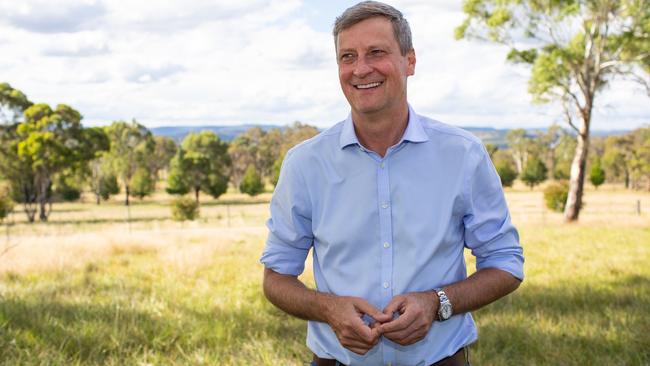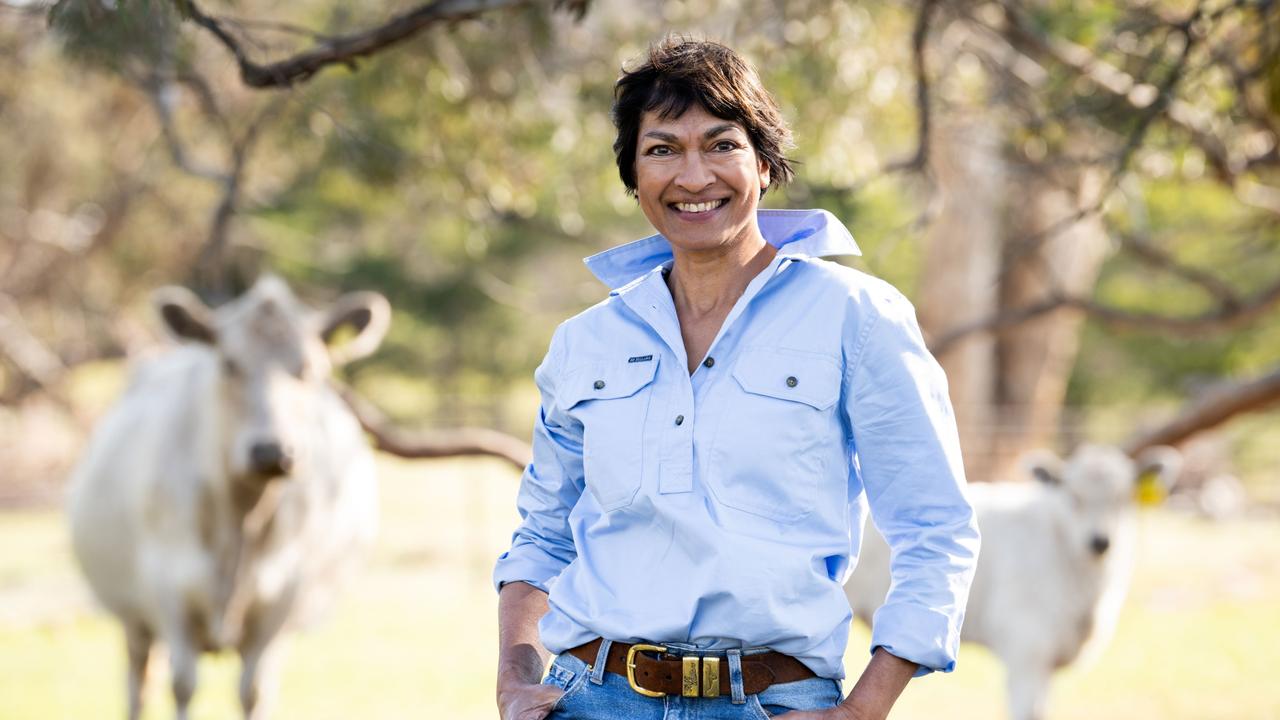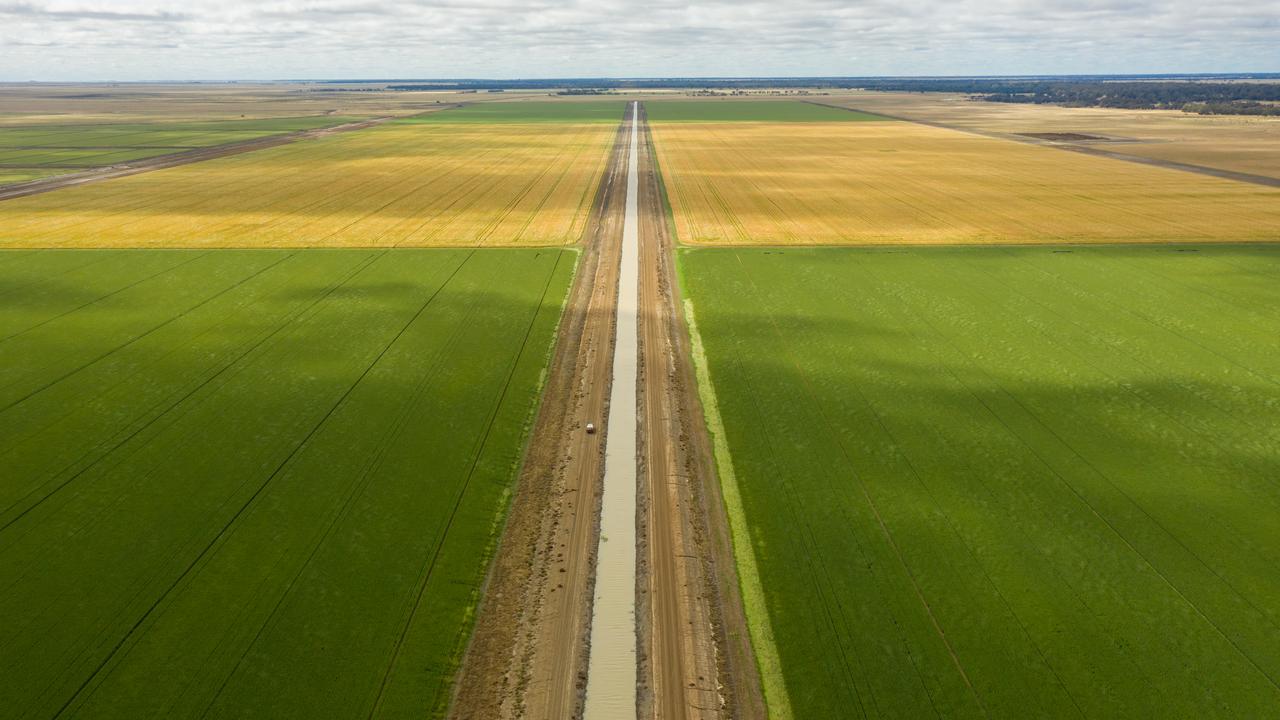Q&A with Hugh Killen: How do you classify regen ag?
The boss of one of Australia’s biggest agricultural funds offers an insight into the future of farming and investor appetite for climate-based solutions.

Australian farmers have the ability to lead the world in regenerative agriculture, as investment appetite for the industry grows over the next decade. James Wagstaff sits down with Hugh Killen, chief executive of sustainable agriculture firm Impact Ag Partners, for a warts-an-all discuss about the future of farming and investment.
Hugh Killen, give us a bit of an overview of what Impact Ag is all about.
“Impact Ag has been around for about 10 years, and we’re a specialist agricultural asset management firm. We do a couple of things within that: we identify investment opportunities, we raise capital. We do this on behalf of investors, both large family offices and institutional investors who are looking to get investments into agriculture into Australia, but more specifically to invest in farms that are transitionable from a regenerative standpoint. So we focus a lot on natural capital, regenerative farming principles and soil carbon.
What kind of properties are you zeroing in on from an investment perspective?
“Generally we look to invest in high-rainfall areas, with a minimum 600-700mm rainfall. We really like to be able to identify country that we can build soil carbon on, and also have mixed-farming operations. But that said, we do have properties in places like Dalby in Queensland where we focus on row cropping alone, and we’ve got macadamia plantations up towards Bundaberg as well. So it’s pretty broad but, in the whole, we try to play around in NSW.
You’ve got about $900 million in assets under management already. What’s the target?
“We’d love to just continue to grow in the way that we are. We want to get to a couple of billion dollars in assets under management. We’ve got a couple of legs to that at the moment. We’ve got the Australian business that I’ve got oversight on. And then the founder, Bert Glover, in the US based in Bozeman (Montana), looking at raising and deploying capital over there. We have also got a joint-venture with Sustainable Land Management. So I think we’ve got a couple of things that are going in our direction and hope to continue to grow.
You touched on regenerative agriculture. It’s a bit of a vexed issue. If you talk to 10 different people about it, you might get 10 different responses to exactly what it is. How do you classify regen ag?
“It’s one of these kind of catchcry words, right? It’s similar to organic. Regenerative agriculture, for me, is about using farming as a climate solution. And what I mean by that is that it is about approaching farming in a way where you can restore and enhance the ecosystem functions, which is a big word, but again, that’s about natural capital. Mainly, it’s about looking at nature-based solutions as the enabler around it. And when I break that down, we’re talking about soil health and repairing soil health on farms.
People associate regenerative agriculture with small-scale farmers. How hard is regen ag to achieve over scale?
“Regenerative agriculture has got a huge amount of focus globally from the largest CPGs and banks in the world in terms of that being an investable trend that they want to transition their supply chains to. It’s very difficult (to achieve over scale). It’s easier, obviously, to do things that are smaller. But over time, I think with the right investment criteria, the right regulatory environments, we can see it happen. But, it requires a lot. You need whole-landscape focuses … not just whole farms, but whole regions. And we also really need a whole value chain starting to understand that they should be at least having a predisposition towards products that are produced regeneratively.
What is investor appetite like and where is the demand coming from?
“The investor appetite is pretty good. When you think about the natural capital part of the market in particular, it’s starting to grow but off a very low base. So it’s largely an untapped opportunity. If you think about world GDP being around $100 trillion, agricultural, forestry and fishing’s contribution to that is about 4 per cent, or $4.4 trillion. But allocation of institutional resources into natural capital as its own asset class is remarkably low, it’s less than 0.1 per cent of that GDP. So we’re starting to see a lot of focus in the space, particularly from offshore investors. We’re going to see continued growth of investment, institutional capital into regenerative agriculture. If you start thinking about companies like Mars, for instance, and what they’re investing to that space, I think you’re going to see money flowing at an increasingly larger scale.
How advanced is the regenerative ag market in Australia? How do we stack up to the likes of North America and Europe, and why are investors looking Down Under to shore up their natural capital?
“We’re pretty good. And what I mean by that is, if you think about Europe, for instance, you’ve largely got smaller farms with very complicated ownership structures. The UK is a very good example of that, where most farmers are actually tenants – they don’t actually own their land. And then the US has actually got lots of smaller ranches, so trying to get all those guys pointing the same direction is hard. Australia, I think, by nature of us having to operate in an environment that’s challenging in itself, has always been quite entrepreneurial and adapts to technology very quickly. So we have the ability to lead in regenerative farming, I believe, and some of that’s borne by necessity. Some of it is due to Australia being a good investable market as well. Institutional capital likes coming down here: it understands the market well and understands investment parameters. So all of those things packaged up, I think, has put Australia in a pretty good place.
There’s been a lot of money coming into Australian ag during the past decade. We’ve seen it with the big investment companies from Canada, the US, the Netherlands. Going forward, how much will environmental demands be attached to this cash over the next decade or so?
“It will continue to be one of the main drivers. The global thematics around climate change and transitioning are not going to go anywhere soon. Obviously, these thematics, the fidelity goes up and down depending on what’s going on, but ultimately, at the end of the day, the science of climate change and global warming is fully understood. And I think investors are looking for avenues to invest and to be involved in ensuring that the money is going to the right place around that. I can’t see any reason why the flow of funds into Australia is going to slow down from an ag perspective, and I can’t see why it wouldn’t continue to have a requirement around responsible investing, especially around climate change and regenerative agriculture.
Where do you see the regen-ag or natural capital solutions market heading in the next 10 years?
“It’s going to continue to grow. If you go back to soil health and soil carbon, if you think about if you can build soil health on a farm, you’re going to have a much more profitable, much more, much healthier production base that is only going to continue to grow. The burning platform for me is when you look at a macro view of farming or of soil health globally, I think the last data I saw was 98 per cent of the world’s terrestrial food production is obviously soil-based. Food production is going to continue to grow, I think 55 per cent by 2030, but more than half the world’s soils are heavily degraded. And in fact, they’re being lost faster than they can replenish themselves. So under that type of magic, I think, building farms of the future, building really viable soil-carbon projects, thinking about that transition to farming in a different way that’s less extractive, it’s a necessity. And I think the trend is only going to get higher.
There’s a lot of awareness about natural capital solutions and regen ag in the corporate sector. How is the level of interest in the models from Mum and Dad farmers?
“I think they find it really confusing and registering your projects is a complicated thing to go through. Not all farms are the same, not all regions are the same. For the average farmer, and the average smart farmer is super smart nowadays, actually picking their way through it is complicated and transitioning a farm from the practices that might have been underway for the last 20 to 30 years and to say this more regeneratively based is a big financial decision to make.
All this work, environmental credentials, obviously comes at a cost. And if we’ve seen anything over the past 12 months to two years, it’s that consumers want cheaper food. Can they put these demands on farmers and expect things to cost the same or less at the supermarket checkout?
“I think this is kind of the crux of a lot of the discussions that are going on in the community at the moment around who owns the pricing power and where do costs get pushed? And I would be very disappointed to see just pushing those costs back into the farmers. Farmers are the land stewards, they’ve been pretty much uncompensated over a long time in terms of looking after the natural capital on their lands. We’ve got structures. In fact, we have got the best compliance carbon market in the world for farmers to actually register and then earn obviously highly verified carbon credits off the back of that. So that’s an income that comes in. I think for other big companies, though, that are looking to push the cost of their supply chains back into the farm, I’d really hate to see that happening. And I think it’s an important discussion that needs to be had.





